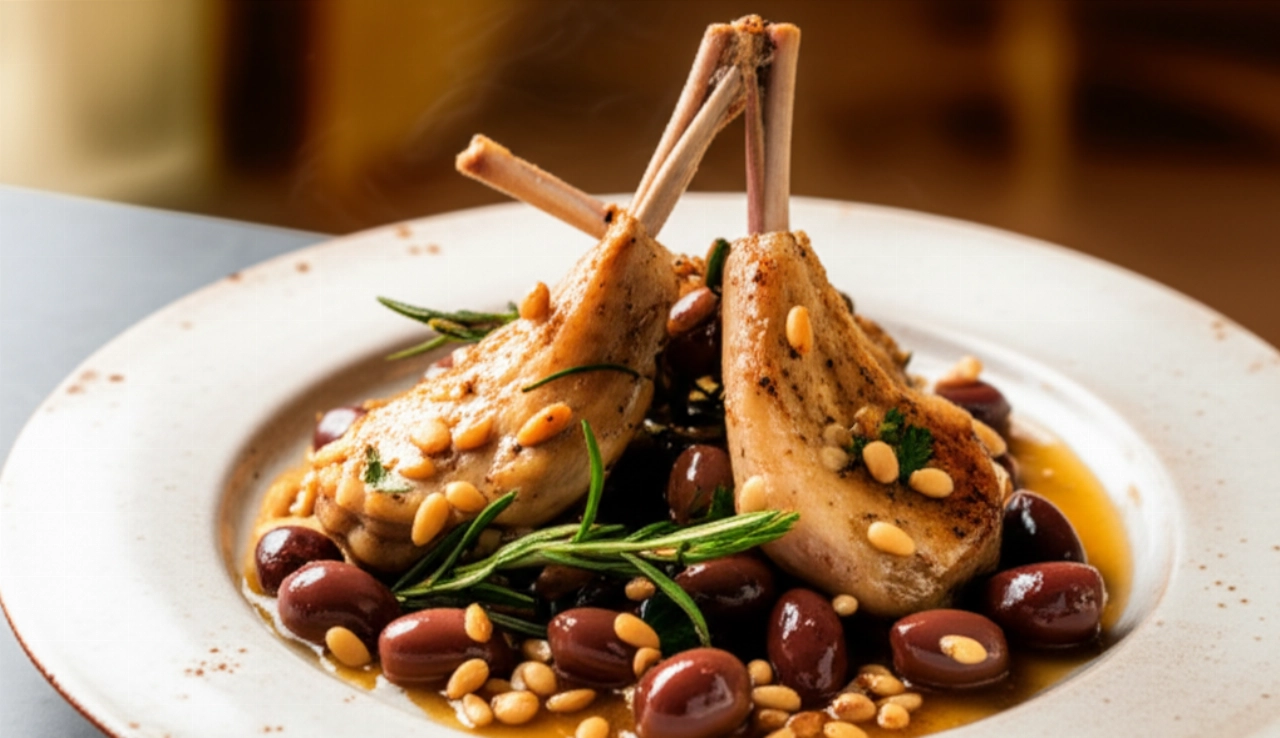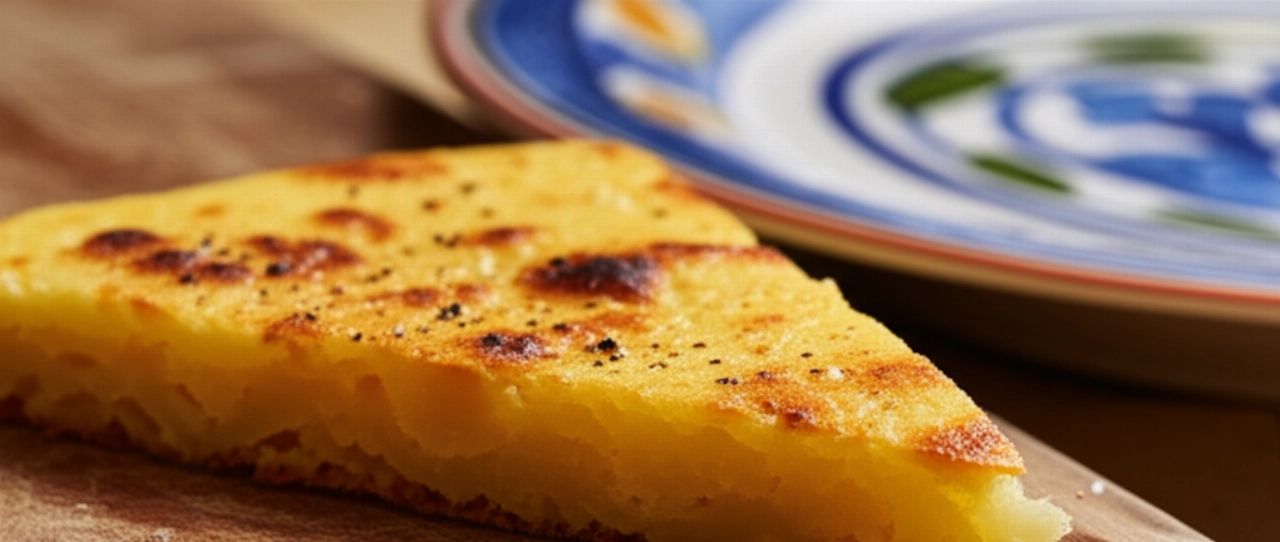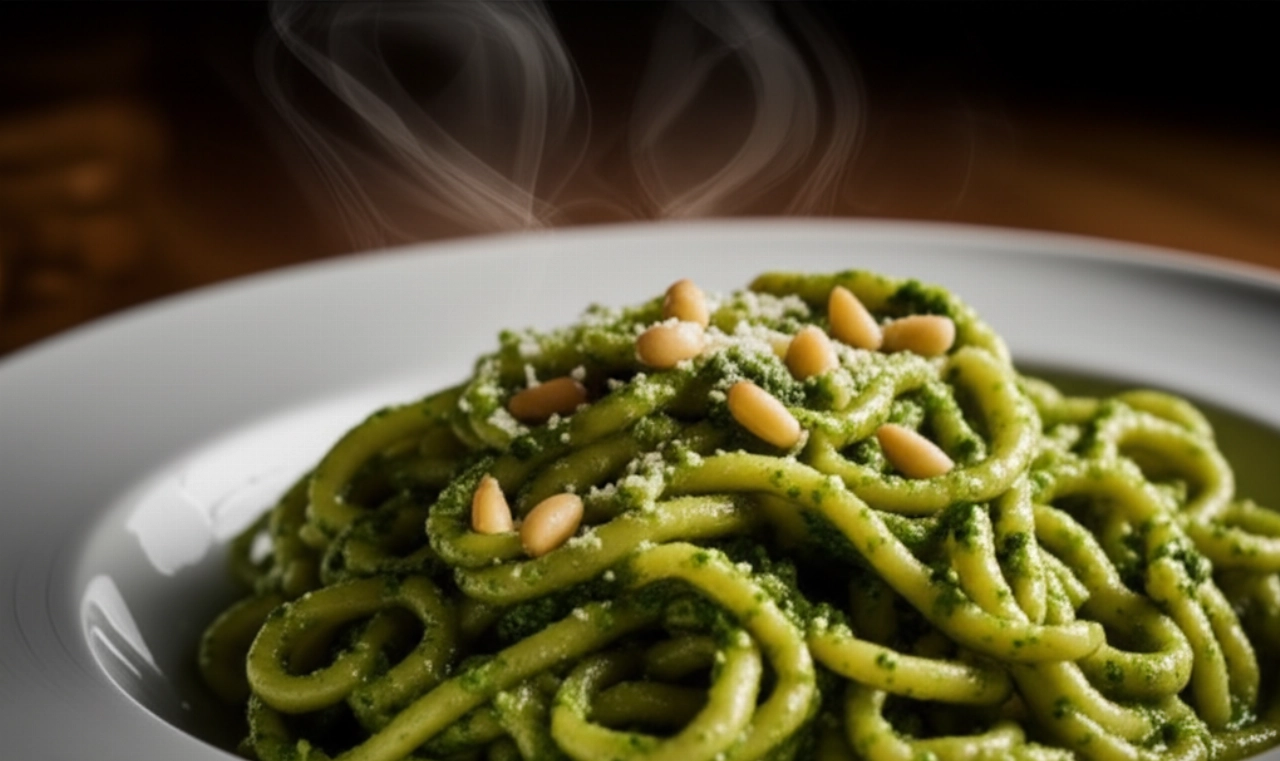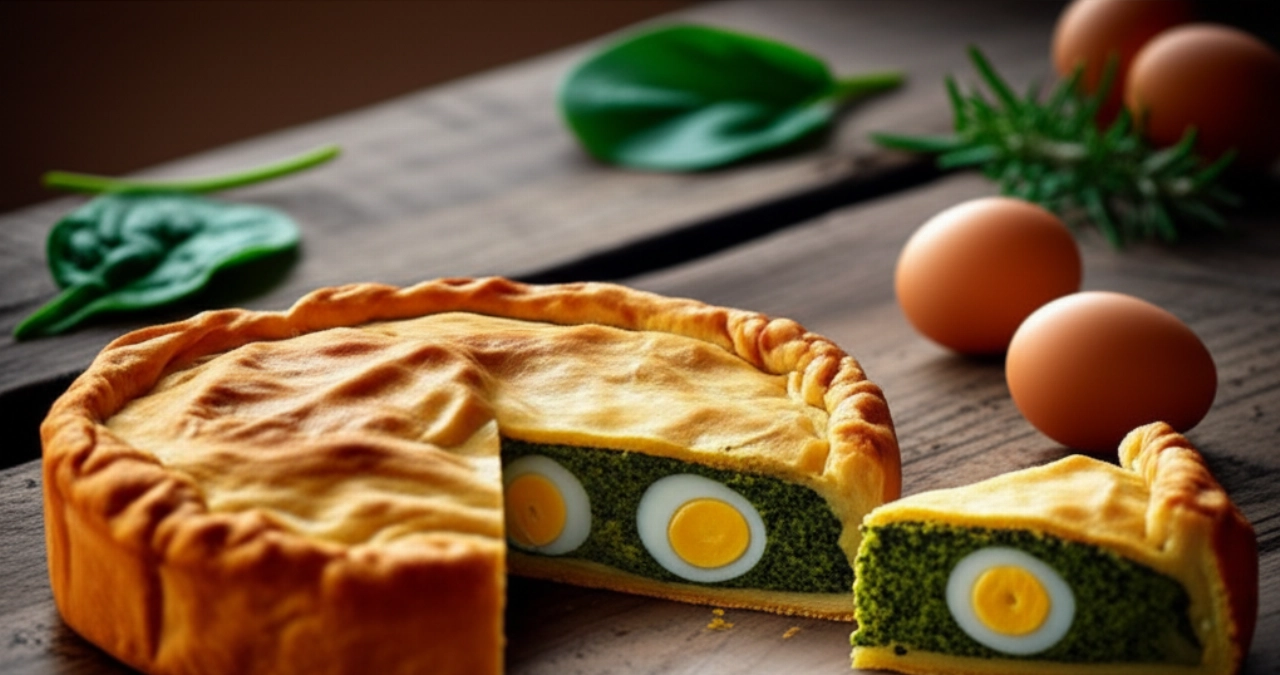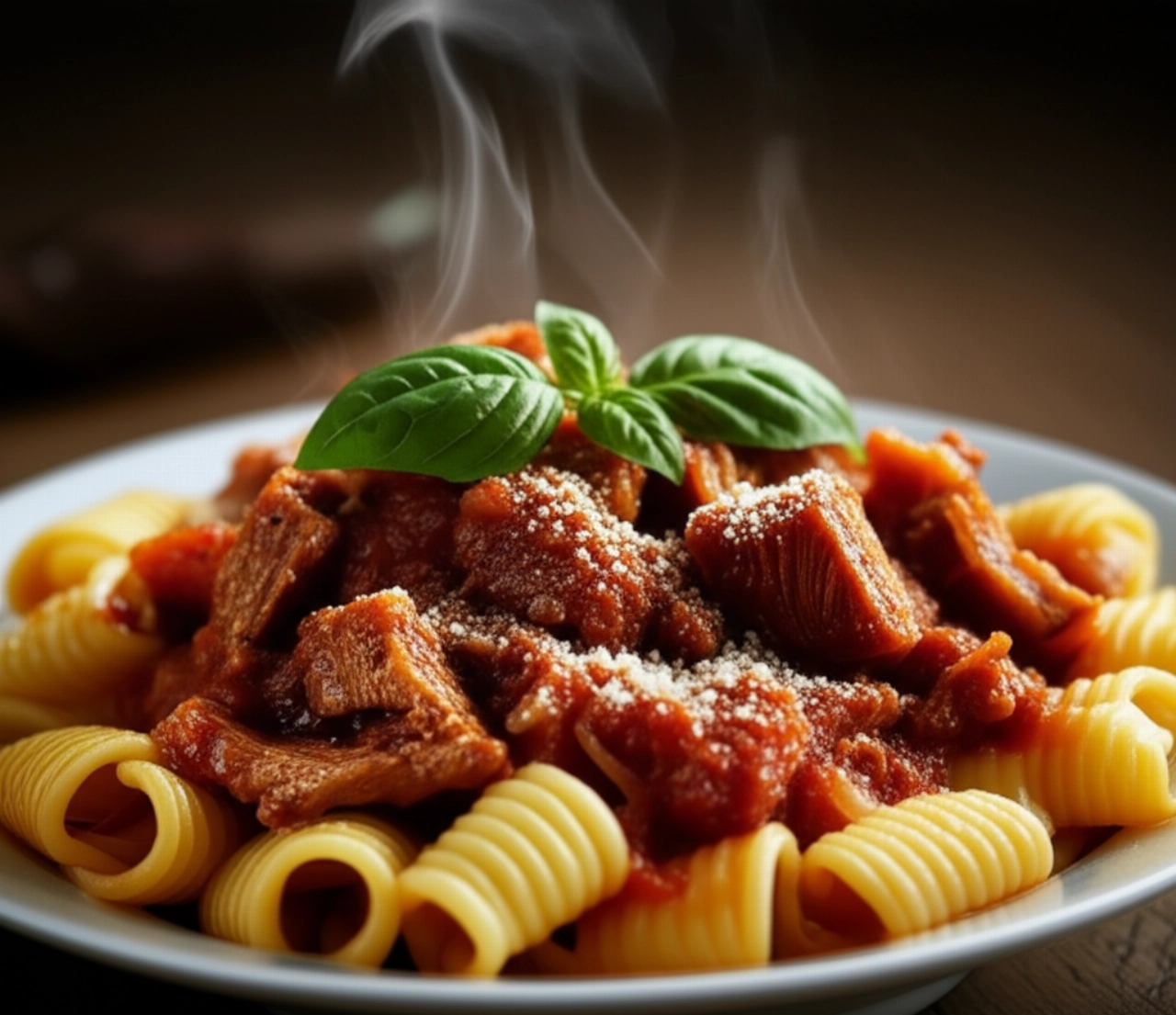Imagine a dish that smells of Liguria, where fresh stuffed pasta meets a velvety and enveloping sauce, a true embrace of flavors that transports you directly through the alleys of Genoa. We are talking about Pansotti with walnut sauce, a first course that is pure poetry.
But how many times have you tasted walnut sauces that are too bitter, too greasy, or that separate? And are the pansotti really the right ones, with that herb filling that tastes of the countryside and tradition? Finding the authentic recipe, the one that makes you feel at home, can seem like a challenge, and the fear of wasting precious ingredients or disappointing your guests is always around the corner.
Make yourself comfortable. Here on Search Recipes, you won't just find a list of ingredients, but the definitive guide, full of tricks and tips handed down from generation to generation, to prepare the most balanced, authentic, and unforgettable Pansotti with walnut sauce of your life. Success is guaranteed, and so is the 'Wow!' from your diners. I will guide you step by step to create a velvety and flavorful walnut sauce that coats the pansotti without being heavy, just as Ligurian tradition dictates, with tricks to avoid bitterness or excessive greasiness, and for homemade or perfectly chosen pansotti.

Smart Ingredients: The Choice That Makes the Difference
For such an iconic dish, the quality of the ingredients is fundamental. It's not just about listing them, but understanding the 'why' behind each choice. Here's what you need and why:
- Pansotti: If you don't have the time or skill to make them at home (and I understand, they require dedication!), choose fresh pansotti of excellent quality. Look for artisanal ones, possibly filled with preboggion (the mix of wild Ligurian herbs) or, in alternative, spinach and ricotta. The pasta should be thin, almost transparent, to best embrace the sauce.
- Walnut Kernels: Only excellent quality walnuts, fresh and not rancid. Always taste one before using them! For a lighter sauce with a more delicate flavor, I'll reveal a grandma's trick: you can blanch them for a minute and remove the outer skin. It's not mandatory, but it really makes a difference in terms of sweetness and color.
- Pine Nuts: Small, but essential! They add a sweet and buttery note that balances the stronger flavor of the walnuts. Choose fresh ones from a good source.
- Garlic Clove: A small clove, please, and without the inner germ. Its role is to provide a delicate aroma, not to dominate the dish.
- Fresh Marjoram: It is the aromatic herb symbol of Liguria, giving an unmistakable aroma and a touch of freshness that enhances the sauce. Do not use dried marjoram, it's not the same thing!
- Stale Bread Crumbs: This is a real secret! Soaked in milk (or water) and well squeezed, it is essential to bind the sauce and make it velvety, absorbing excess oil and preventing the sauce from separating.
- Parmigiano Reggiano or Grana Padano: Grated at the moment, for saltiness and to contribute to the final creaminess of the sauce.
- Extra Virgin Olive Oil: If possible, choose a Ligurian oil, delicate and fruity. It is the fatty base of the sauce and must be of the highest quality.
- Pasta Cooking Water: Never throw it away! It is rich in starch and will help you emulsify the sauce, making it incredibly creamy and perfectly binding the flavors.
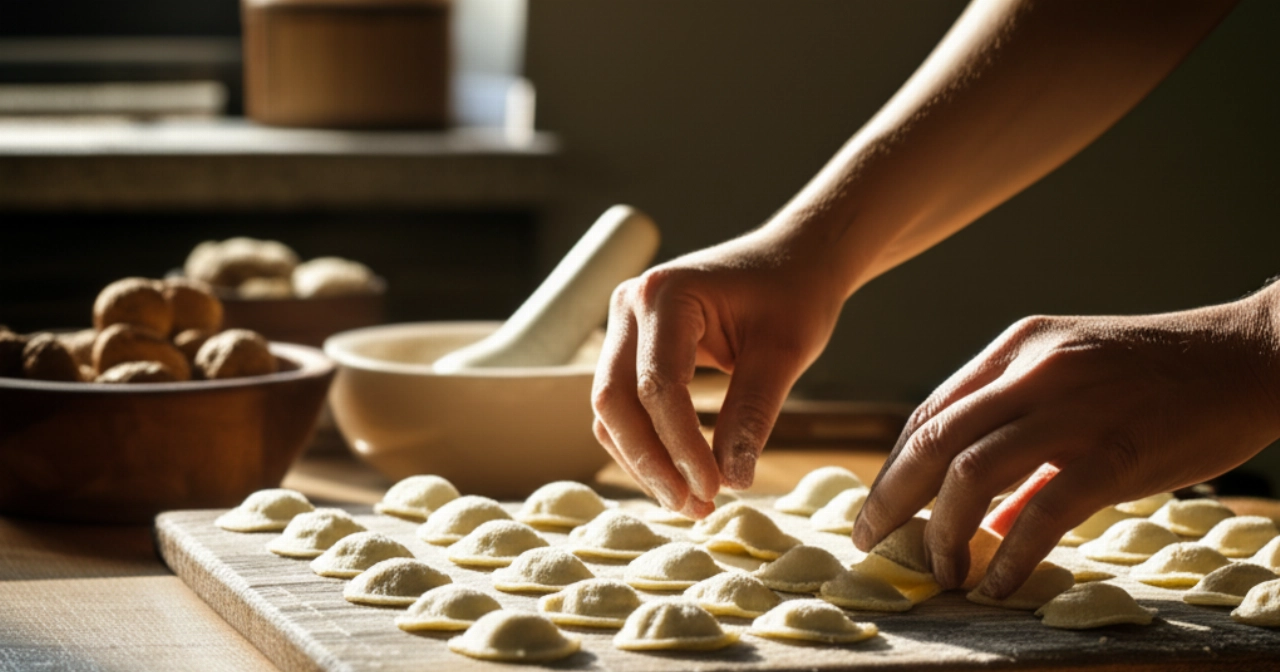
The 3 Mistakes That Make Walnut Sauce Bitter or Greasy (and How to Avoid Them)
As a true guardian of the kitchen, I want to protect you from the most common failures. Here are the mistakes to avoid for a walnut sauce that will earn applause:
- Using old or rancid walnuts: This is the number one mistake. Walnuts, if not very fresh, can have a bitter or rancid taste that will irrevocably ruin your sauce. Always taste one before starting the preparation!
- Excess garlic or not removing the germ: Garlic is an aroma, not a protagonist. Use little and always remove the central germ (the green sprout inside) to prevent the sauce from being indigestible or too pungent.
- Too much oil or too little bread crumbs: Walnut sauce should be velvety and enveloping, not greasy. Bread crumbs are essential for absorbing the excess fat from the walnuts and giving the right consistency. Do not skimp on this step; it is your ally for a light and creamy sauce!

Grandma's Secret: The Ligurian Touch That Makes the Difference
My grandmother, a true Ligurian, always taught me that the real secret of walnut sauce is not just in the ingredients, but in how they are blended. She used a marble mortar, patiently pounding for hours, almost in meditation. If you don't have a mortar, a good immersion blender will work perfectly, but with a trick few people know:
During blending, add an ice cube or a tablespoon of cold water. This helps keep the temperature of the walnuts low, preventing them from overheating and releasing excess oil, making the sauce lighter, less bitter, and incredibly velvety. It's a small gesture, but believe me, it changes everything and brings you closer to the perfection of tradition.
Let's Prepare Pansotti with Walnut Sauce Together: The Step-by-Step Guide
Ingredients (for 4 people):
- 500 g fresh pansotti
- 200 g walnut kernels
- 30 g pine nuts
- 1 small garlic clove (without germ)
- 1 generous bunch of fresh marjoram
- 50 g stale bread crumbs
- 50 ml milk (or water) for soaking the bread
- 80 g grated Parmigiano Reggiano (or Grana Padano)
- 80 ml Ligurian extra virgin olive oil
- Salt and black pepper to taste
- Pasta cooking water as needed
- (Optional: 1 ice cube for blending)
Preparation:
- Prepare the bread crumbs: Put the bread crumbs in a bowl and soak them in milk (or water) for a few minutes. Then squeeze them very well with your hands, removing excess liquid. They should be moist but not wet.
- Start the sauce: In the immersion blender cup (or in a mortar, if you're a purist!), put the walnut kernels, pine nuts, garlic clove (without germ), fresh marjoram leaves, and the squeezed bread crumbs.
- Blend and add oil: Start blending by adding the extra virgin olive oil in a thin stream, a little at a time. If using a blender, blend intermittently (turn on and off) to avoid overheating the walnuts too much. If the sauce struggles to bind or becomes too thick, add the ice cube or a tablespoon of cold water.
- Achieve creaminess: Continue blending until you get a smooth and homogeneous cream, but not too liquid. It should have the consistency of a thick mayonnaise. Adjust salt and pepper to your taste.
- Cook the pansotti: Bring plenty of salted water to a boil. Gently drop the pansotti and cook them for the time indicated on the package (usually a few minutes, as it's fresh pasta).
- Perfect emulsification: Before draining the pansotti, take a ladleful of cooking water and add it to the walnut sauce. Mix well; you'll see how the sauce will soften and become even more velvety.
- Combine pasta and sauce: Drain the pansotti directly into the pan with the sauce (or in a large bowl). Add the grated Parmigiano and gently emulsify, mixing carefully to ensure each pansotto is coated in the sauce. If necessary, add a little more cooking water to achieve the desired consistency.
- Serve: Plate immediately, garnishing with a few fresh marjoram leaves and a sprinkle of Parmigiano. A drizzle of raw EVO oil just before serving will enhance all the flavors.
Tips and Frequently Asked Questions about Pansotti with Walnut Sauce
Here are some answers to the questions I am most often asked, to clear up any doubts and ensure your complete peace of mind.
Can I prepare the walnut sauce in advance?
Certainly! You can prepare it even a day in advance and store it in the refrigerator in an airtight container. Before using it, take it out of the fridge at least half an hour beforehand, and if it's too thick, soften it with a little hot pasta cooking water when emulsifying.
My sauce became too liquid, how do I fix it?
If the sauce is too liquid, you can try adding a little more well-squeezed bread crumbs and blending again. Alternatively, you can thicken it slightly over very low heat for a minute, stirring constantly, but be careful not to let it 'fry' or burn.
Can I freeze walnut sauce?
Yes, you can freeze it in portions. It keeps well for a couple of months. Thaw in the refrigerator and, before using, bring it back to room temperature and add a little cooking water to restore the right consistency.
What is the best pairing for Pansotti with walnut sauce?
A good Ligurian white wine, fresh and savory, like a Vermentino or a Pigato, is the perfect pairing that enhances the delicacy of the dish without overpowering its flavors. For a final touch, a drizzle of raw EVO oil just before serving will enhance all the flavors.
A Ligurian Masterpiece Awaits You!
There you have it! Now you no longer just have a recipe, but all the secrets to bring to the table a dish that tastes of Liguria, tradition, and love, with a perfectly balanced walnut sauce and pansotti that will make you dream. You've learned the tricks to avoid common mistakes and to enhance every ingredient to the fullest, just like a Ligurian grandmother would.
Don't be afraid to experiment. Cooking is an act of creativity, generosity, and sharing. But start from this solid base, and you'll see that applause will not be lacking, and the scent of home will fill your kitchen, bringing a smile to anyone who tastes your masterpiece.
Have you tried our Pansotti with walnut sauce recipe? We are very curious to see your masterpiece! Leave a comment below, tell us how it went, or share a photo on Instagram by tagging @CercaRicette.it. If you loved this Ligurian first course, you can't miss our recipe for Genoese Focaccia, perfect for 'scarpetta' (mopping up sauce), or another classic like Original Genoese Pesto. Italian cuisine awaits you!
